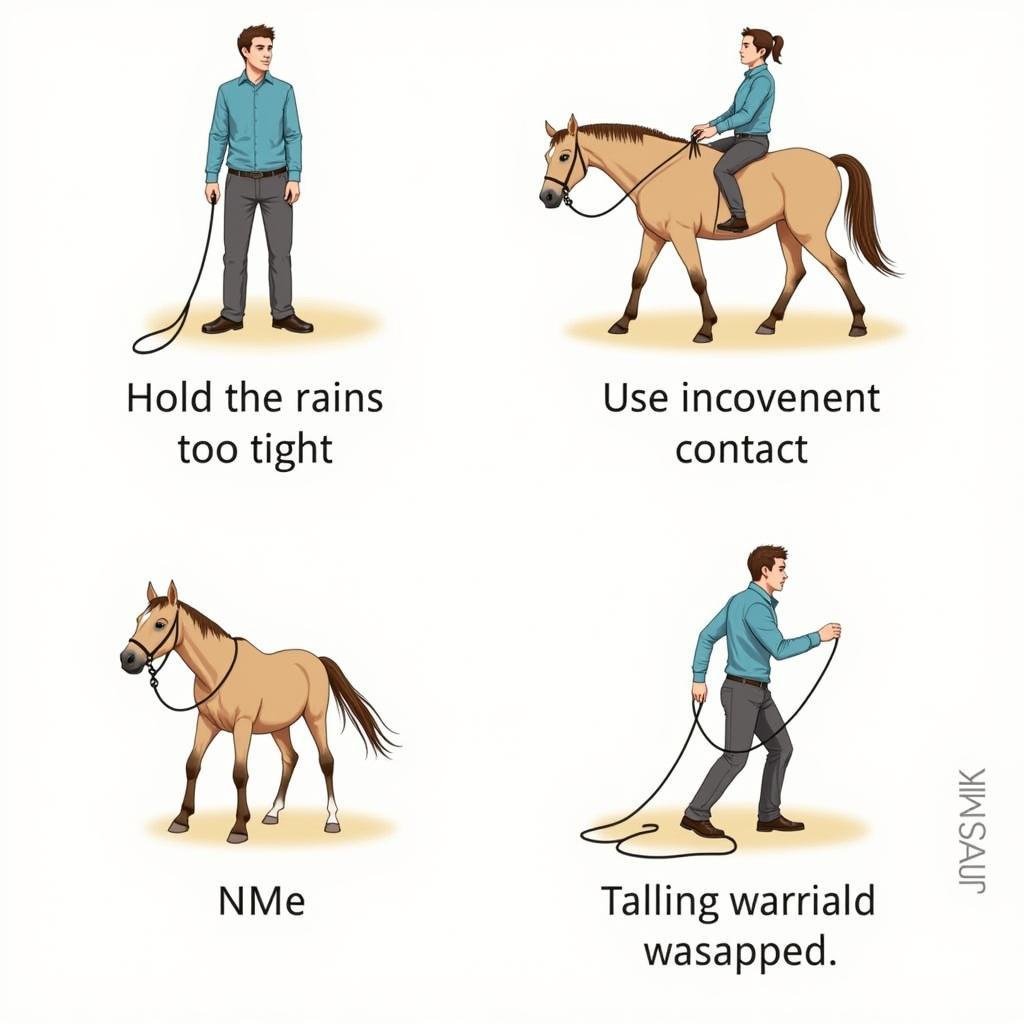Horses in reins, a fundamental aspect of riding, represent the connection between horse and rider. This connection, facilitated by the reins, allows for communication, control, and guidance. Understanding how to properly use reins is crucial for both horse and rider safety and for developing a harmonious partnership.
Different Types of Reins and Their Uses
Reins come in various materials and styles, each suited for different disciplines and rider preferences. Leather reins for horses are a classic choice, known for their durability and grip. Braided reins for horses offer a softer feel and are often preferred for their flexibility. Understanding the nuances of each type of rein can significantly enhance your riding experience. Choosing the right reins depends largely on the type of riding you practice, and personal preference.
What are the different types of Western reins? Western reins, unlike English reins, are often single and longer, reflecting the needs of working cowboys. Western horse reins can be made of various materials, including leather, braided nylon, or even rawhide. They offer a different feel and control compared to English reins, requiring a more subtle hand.
How to Hold and Use Reins Effectively
Holding the reins correctly is the foundation of good horsemanship. A balanced and relaxed grip allows for clear communication with the horse without being overly restrictive. The position of your hands, wrists, and elbows all play a crucial role in how effectively you use the Horse In Reins. Avoid gripping too tightly, which can create tension in the horse, and instead, aim for a light and responsive contact.
How can I improve my rein contact? Practice and awareness are key to improving your rein contact. Regularly checking your hand position and ensuring a soft, following contact will help develop a more refined feel for the horse’s mouth.
The Importance of Rein Contact in Horse Riding
Rein contact, that subtle connection between the rider’s hands and the horse’s mouth through the reins, is more than just steering. It’s a constant conversation, a nuanced exchange of information that guides the horse, maintains balance, and builds trust. A sensitive and consistent rein contact allows the horse in reins to understand and respond to the rider’s cues with precision and willingness. Reins horse riding are integral to communication between horse and rider. This crucial connection forms the basis for understanding and response.
What does it mean to have ‘soft’ hands when riding? Soft hands refer to maintaining a light and flexible contact with the reins, allowing the horse to move freely while still being responsive to the rider’s cues. It’s a balance between giving and taking, ensuring clear communication without unnecessary pressure.
Johnathan Davies, a renowned equestrian coach, emphasizes the importance of proper rein usage: “The reins are not for pulling, but for guiding. A well-trained horse in reins should respond to the slightest pressure, moving with grace and precision.”
Common Mistakes and How to Avoid Them
Even experienced riders can fall into bad habits with rein use. Overly tight reins, inconsistent contact, and sawing on the mouth are just a few common mistakes that can hinder communication and create discomfort for the horse. Understanding these common pitfalls can help riders develop a more harmonious and effective partnership with their horse in reins. Horse bridle and reins need to be checked regularly for proper fit and function. A poorly fitted bridle can negatively impact rein contact and the horse’s comfort.
 Common Rein Mistakes to Avoid
Common Rein Mistakes to Avoid
Sarah Mitchell, a respected horse trainer, advises: “Always be mindful of your hands. Think of them as an extension of your thoughts, communicating clearly and kindly to your horse through the reins.”
In conclusion, understanding the horse in reins is paramount for any rider. From selecting the right type of reins to mastering the art of subtle communication, each aspect plays a vital role in developing a harmonious and effective partnership. By avoiding common mistakes and focusing on clear, consistent contact, riders can unlock the true potential of their horse in reins, fostering a deeper connection and achieving greater success in their riding endeavors.
FAQ
- What are the different types of reins?
- How do I hold reins correctly?
- What is the importance of rein contact?
- What are common mistakes with rein use?
- How can I improve my rein handling?
- How do I choose the right reins for my discipline?
- How do I care for my leather reins?
If you need further assistance, please contact us at Phone Number: 0772127271, Email: [email protected] or visit us at QGM2+WX2, Vị Trung, Vị Thuỷ, Hậu Giang, Việt Nam. We have a 24/7 customer service team.